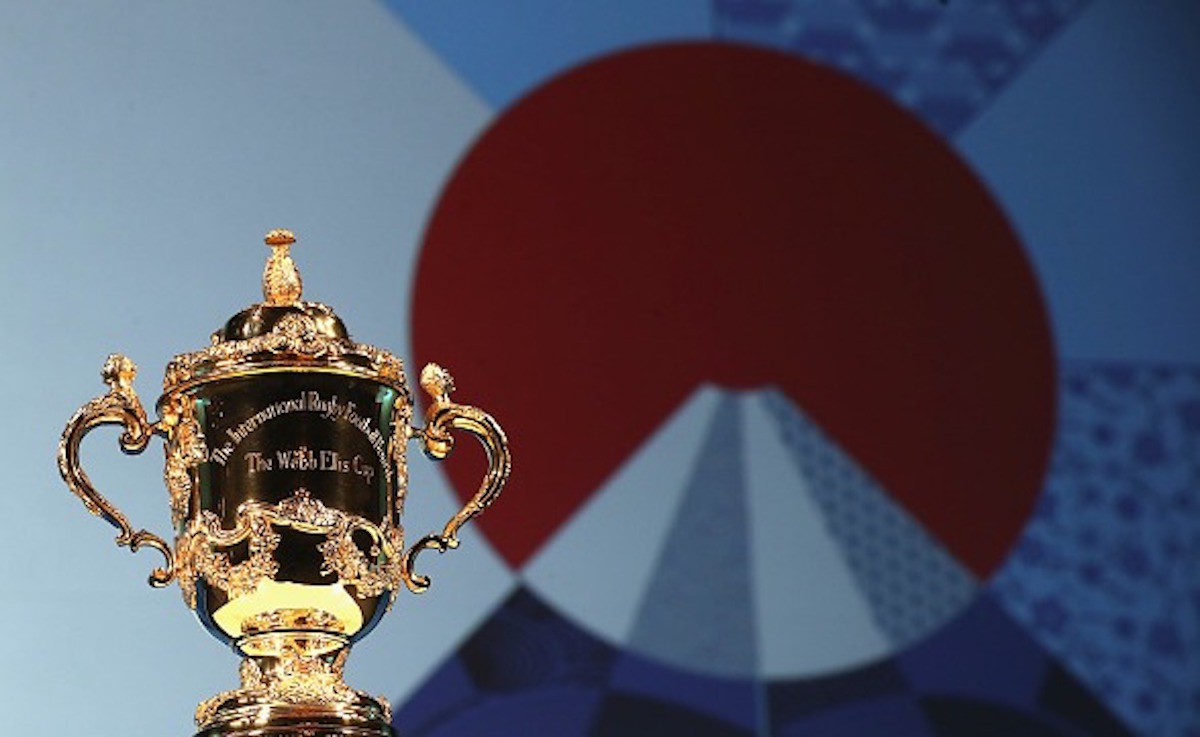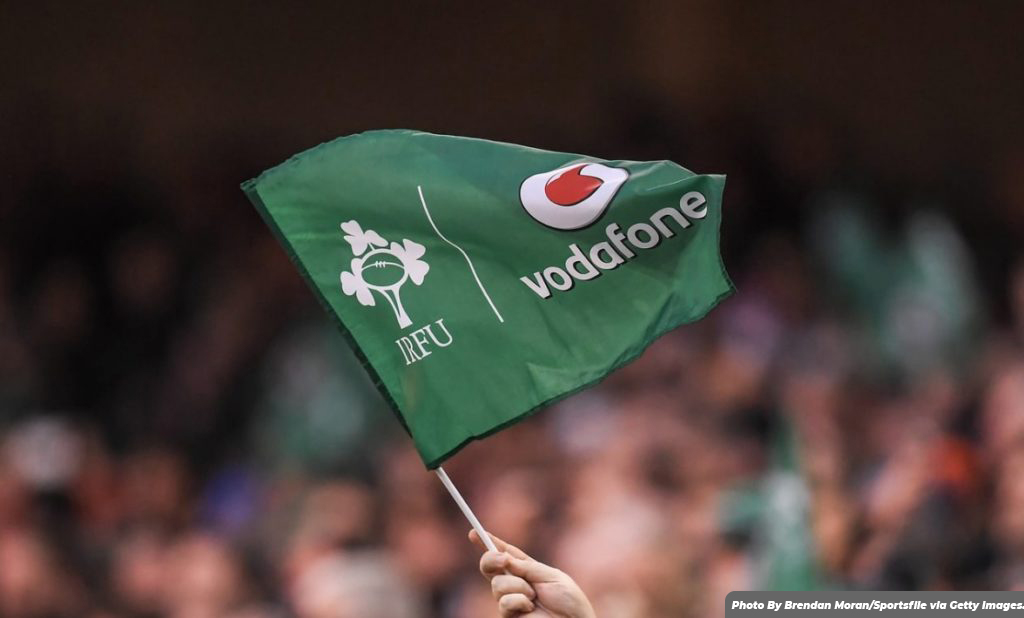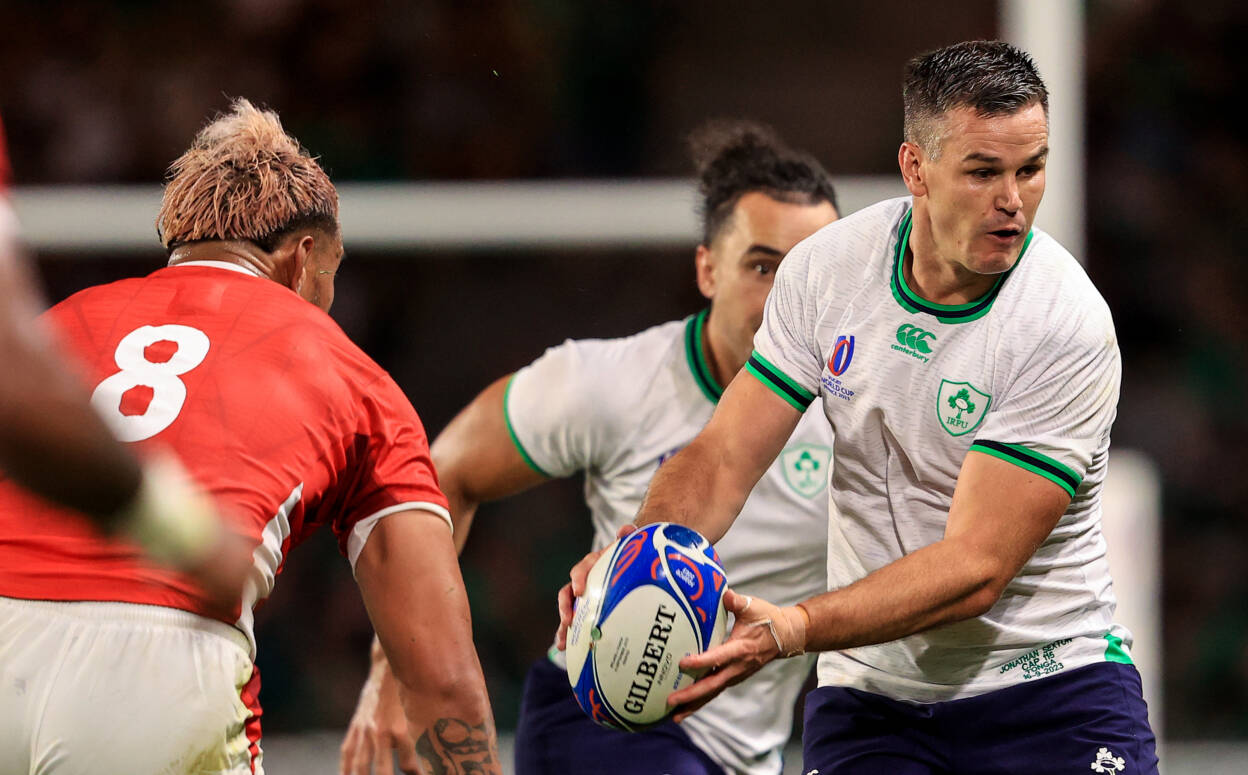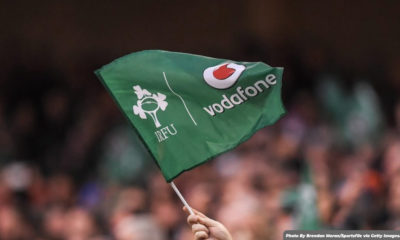Rugby World Cup
World Cup 2019 Preview.

It’s almost here, all 20 teams are now in Japan and itching to show off their prowess on the field and be crowned the Rugby World Cup Champions 2019. The competition kicks off on Sept 20th with 5 teams divided into 4 Pools, A, B, C, D.
What are the bookmakers saying?
Cup holders, New Zealand, are in Pool B and are pitted against South Africa, Italy, Canada and Namibia. Will the All Blacks make it three in a row? Is it a good thing that they are pitted against the Springboks? And many would love to know if they are worth betting on. Hell yeah, and that’s why you may want to check out this list of betting sites before you place that potentially lucky wager. Right now, the odds favour the All Blacks at 11/1, England at 5/1, South Africa at 9/2 and Wales at 12/1.
Did you know that England could potentially land a big payout if they manage to lift the Web Ellis Cup? That’s a cool £225,000 extra per player if they manage to take home the title which they last won in 2003.
So we know the favourites, but who’s in pole position to cause an upset in Japan. Read on to find out more info per Pool.
All eyes on Pool B
For starters, All Blacks and Springboks are in the same pool and play each other in their opening game. Is that a good thing? Both are peaking in terms of form and will not meet each other again unless they both the reach final. However, it is important to remember that New Zealand have now suffered an injury setback with loose forward Luke Jacobson out of the reckoning after having suffered an injury due to a delayed onset of concussion, rumours are also circulating that SBW may also be carrying a knock. So, are the All Blacks a bit of a worry and worth a wager? Even though the odds say it all with New Zealand still the bookmaker’s favourite, they’ve drawn against the Springboks recently and had close calls against England and Argentina. Then there was that pretty huge loss 26-47 against Australia which they followed up with a sweet victory in the Bledisloe Cup with a 36-0 win. Do they still have it in them to top the pool? Most certainly!
Pool A – The toughest group to call
Ireland and Scotland have their work cut out as they face host nation Japan, Samoa and Russia. Scotland have had their ups and downs losing to and beating France all within a week. Rewind back to the Six Nations and we saw the Scots come back from 0-31 against England to draw the game at 38 all.
The Irish are previous Grand Slam winners and have also overcome New Zealand twice in recent years but have struggled for consistent form in 2019. Wales gave them a sound thrashing in the Six Nations and England added more salt to their wounds in a warm-up match. Their opening match v Scotland will most likely determine who finishes in top spot in Pool A.
Hosts Japan are likely to have all the possible backing from the crowd. They’ll be targeting their game v Scotland in Tokyo as a must-win game to try and make the knock-out stages!
Pool C – The pool of death
England, find themselves pitted against France and Argentina. Wrapping up the pool are Tonga and the USA. The question is whether the ‘Red Rose’ will bloom or wilt away. The 2018 Six Nations was a disastrous period for England, finishing 5th in the Six Nations. Since then they have had ups and downs but seem to be peaking just at the right time following a huge win over Ireland in Twickenham just a few weeks ago and big-name players hitting peak form. They are certainly favourites to top Pool C.
France, on the other hand have a dismal record away from home. They’ve only managed to record 2 away victories against Italy in the last 2 years out of 15 away games. Selecting from the Top 14, they have a wide pool of players to choose from and that widened pool often leads to a lack of cohesion and understanding at International Level. French fans will settle for nothing less than reaching the knock-out stages but the French are notorious for raising their performances when it comes to the World Cup.
Argentina, another team who often raises their game at World Cup time will have their work cut out to make the knockout stages. Domestically, they had a fantastic season with the Jaguares reaching the Super Rugby Final for the first team but that form was not translated in the recent Rugby Championship fixtures. This group will certainly be competitive.
Pool D – A more predictable group
Australia and Wales are set to fight it out for first and second in this pool. The Welsh are without fly-half Gareth Anscombe and back up Fly-Half, Rhys Patchell is also a doubt. The Wallabies, on the other hand, haven’t had much to write home about in the last 18 months. Of the 18 games played they’ve dunked 12, so Wales will be gunning for them hoping for another victory after taken their scalp last Autumn. Uruguay, Fiji and Georgia make up the rest of this pool and will have to bring out their best to force an upset. Fiji have an explosive and exciting backline that will no doubt cause any defence problems and the famous Georgian scrum could also cause any pack a few problems!
Let the games begin!
6 Nations
Farrell Names Ireland Team To Face Scotland In Paris

Head Coach Andy Farrell has named his Ireland Match Day Squad to face Scotland in Saturday’s final Rugby World Cup Pool B clash in Paris (Kick-off 9pm local time/8pm Irish time).
Following wins over Romania, Tonga and South Africa, Ireland conclude their Pool campaign against Gregor Townsend‘s side at Stade de France on Saturday night.
Peter O’Mahony is set to win his 100th cap for Ireland as he starts in the back row, with the 34-year-old in line to become just the 10th Irish player to reach the landmark.
Hugo Keenan, Mack Hansen and James Lowe start in an unchanged Ireland back three, with Garry Ringrose and Bundee Aki continuing in the midfield. Captain Johnny Sexton partners Jamison Gibson-Park once again in the half-backs.
Up front, Andrew Porter and Tadhg Furlong pack down either side of Dan Sheehan, with Tadhg Beirne and Iain Henderson named in the second row. O’Mahony, Josh van der Flier and Caelan Doris complete the starting XV.
The fit-again Jack Conan is in line for his first appearance of Rugby World Cup 2023 as he’s named on the replacements bench, joining forwards Ronan Kelleher, David Kilcoyne, Finlay Bealham and James Ryan, while Conor Murray, Jack Crowley and Stuart McCloskey provide the backline reinforcements.
Robbie Henshaw has been sidelined with a hamstring injury and a further assessment will be made early next week.
Saturday’s match is live on Virgin Media One in the Republic of Ireland and ITV1 in the United Kingdom.
Ireland Team & Replacements (v Scotland, Rugby World Cup, Pool B, Saturday October 7, Stade de France, 8pm Irish time)
15. Hugo Keenan (Leinster/UCD)(34)
14. Mack Hansen (Connacht/Corinthians)(19)
13. Garry Ringrose (Leinster/UCD)(55)
12. Bundee Aki (Connacht/Galwegians)(50)
11. James Lowe (Leinster)(24)
10. Johnny Sexton (Leinster/St Mary’s College) (captain) (116)
9. Jamison Gibson-Park (Leinster)(28)
1. Andrew Porter (Leinster/UCD)(57)
2. Dan Sheehan (Leinster/Lansdowne)(19)
3. Tadhg Furlong (Leinster/Clontarf)(70)
4. Tadhg Beirne (Munster/Lansdowne)(44)
5. Iain Henderson (Ulster/Academy)(77)
6. Peter O’Mahony (Munster/Cork Constitution)(99)
7. Josh van der Flier (Leinster/UCD)(55)
8. Caelan Doris (Leinster/St Mary’s College)(34)
Replacements:
16. Ronan Kelleher (Leinster/Lansdowne)(24)
17. David Kilcoyne (Munster/UL Bohemians)(54)
18. Finlay Bealham (Connacht/Buccaneers)(34)
19. James Ryan (Leinster/UCD)(58)
20. Jack Conan (Leinster/Old Belvedere)(39)
21. Conor Murray Munster/Garryowen)(110)
22. Jack Crowley (Munster/Cork Constitution)(8)
23. Stuart McCloskey (Ulster/Bangor)(14).
Images & Content from Irish Rugby & Images © Inpho Photography
6 Nations
Henshaw: Our Defence Was Good, But We Can Go Up Another Level

Entering match week four of the Rugby World Cup, Robbie Henshaw is feeling fully charged and refreshed after a ‘nice and chilled’ few days in Paris during the Ireland’s squad down time.
The picture has changed in Pool B since Ireland’s 13-10 win over reigning champions South Africa. The Springboks are top of the table on 15 points following their 49-18 defeat of Tonga, with Scotland, as expected, coming right back into contention with back-to-back bonus point victories.
Unbeaten Ireland still have their destiny very much in their own hands, sitting on 14 points with the Scots on 10, but it does mean that Saturday night’s Celtic derby at the Stade de France is effectively a shootout for the quarter-finals.
Ireland have dominated this fixture in recent seasons with eight straight wins, and have won twelve of the last 13 meetings. However, you write off a Scottish team at your peril, and Henshaw knows exactly the type of challenge they will pose.
“Every time we play Scotland we know they’re going to come for us,” he said, speaking at the team base in Tours. “Now we can see what it means to them and what they want to chase, and what we want to chase as well in terms of getting those four (pool) wins.
“They’re going to come and have a go like they always do, through Finn Russell and getting the ball to the width. They’ll have a plan and we’ll just need to make sure we’re rock solid and we attack it.”
Henshaw got another half-an-hour of game-time under his belt against South Africa, coming on during Garry Ringrose’s first half HIA and then as a permanent replacement just past the hour mark.
The Athlone man has played in four of Ireland’s last five matches, including starts against Italy and Samoa in the lead up to the World Cup. If he gets an opportunity to feature this weekend, he readily accepts that he has to make the most of it given the form of the other centres.
Bundee (Aki) has been brilliant. His body is in great shape, he is flying fit, as has Garry. The lads’ performances have been consistent.
“Bundee has been flying in terms of getting tries. He’s been letting us know he’s near the top of the try scorers’ list (with four tries so far), which we’ve been having a laugh about!
“They’ve been outstanding. Whenever I get a chance to come in, it’s making sure I put my best foot forward and whenever I come off the bench, put in a good performance.”
As well as Henshaw, Ulster’s Stuart McCloskey, who is in buoyant mood after the birth of his second son, is pressing to be involved and make his World Cup debut, as is the versatile Jimmy O’Brien, who played at centre against the ‘Boks last November.
Ireland’s strength in depth in midfield – and clean bill of health – is a huge asset at this stage of the tournament, especially if the starting pair for Saturday continue to produce the sort of form that Aki and Ringrose have across the opening three rounds.
“There’s always in the past – Six Nations, Novembers – there’s always been one of us (centres) in or out due to injury or whatever,” acknowledged Henshaw, who scored his eighth Test try against Scotland in March 2021.
“Hopefully we can keep us all fit. But the quality we have, we’ve great strength in depth in those positions, even the likes of ‘Earlsie’ (Keith Earls) being able to come in at 13 and Jimmy, the depth we have here is key for playing in a World Cup because anything can happen.”

The 30-year-old Leinster star admitted it was ‘all hands on deck’ when he was initially sprung from the bench against South Africa. It was his chop tackle on Pieter-Steph du Toit that allowed James Lowe to get in for a turnover at a crucial stage.
Keeping Jacques Nienaber’s men to just one try – and eight points in all – was a huge factor in the overall outcome. That was also the case when Ireland beat Scotland in the 2022 and 2023 Six Nations, winning 26-5 in Dublin and 22-7 in Edinburgh respectively.
As things stand, Ireland have the third best defensive record across the pools, conceding 32 points so far compared to host nation France’s 25 and England’s 22. Maintaining those standards will be vital against Scotland in such a high-stakes encounter.
“We had a good look at what we did against South Africa. I think our defence, we showed some great pictures in defence but we know we can go (up) another level,” insisted Henshaw.
“Definitely in attack, we took some steps forward but we left some opportunities out there as well. Looking at everything from our set-piece lineout, how can we get better there? In the first few moments we missed a few lineouts and that let South Africa off the hook a bit.
“Definitely we’ll break down bits like that and make sure we learn from it and we grow.”
Images & Content from Irish Rugby & Images © Inpho Photography
6 Nations
Sexton ‘Very Proud’ Of Record, But Win Was More Important

Head coach Andy Farrell said it was ‘so fitting’ that Jonathan Sexton broke Ronan O’Gara’s record with a memorable try under the posts to become Ireland’s all-time top points scorer.
O’Gara (1083 points) leapfrogged David Humphreys (560) at the top of the scoring charts back in February 2006, and now the mantle has passed to another talismanic number 10. Sexton’s try and 11 points from the tee against Tonga took his career haul for Ireland to 1090.
Adding in his 2013 try for the British & Irish Lions against Australia, he has moved above Welsh legend Neil Jenkins into fourth place on the list of highest scorers in international rugby history.
Sexton claimed the Irish record in style with a cleverly-worked 37th-minute score that secured Ireland’s second bonus point of this Rugby World Cup. The rush of his team-mates to congratulate and engulf him behind the posts spoke volumes.
“I was just happy to score the try,” admitted the Ireland captain, modest as ever. “I think one of the lads said it to me (about breaking the record) under the posts. I actually thought I might have got it on the kick before.
Look, it’s something when you retire you can look back on and be very proud of. I think my little boy (Luca) will be over the moon. He was talking about it during the week.
“It probably means more to him! He’ll chase it down now, and so will the other 10s. It’s there to be broken now and I’m sure some young guys will be eyeing it up.
“I’m very proud to do it, but tonight it was more important getting the win and moving on to what is such a massive game (against South Africa) this coming week.”
Sexton has started France 2023 in impressive form despite his lack of recent game-time. He has racked up three tries and 40 points in all across the first two rounds, with only England’s George Ford (41) ahead of him.
The St. Mary’s College clubman has already topped his tallies from previous World Cups – 21 points in 2011, 31 points in 2015, and 26 points in 2019 – but is acutely aware that scoring opportunities will be much more difficult to come by against the Springboks.

Asked about the minutes he had gotten under his belt and the drive to get back to peak form, he admitted: “The proof will be next Saturday if I’m in good form. You’ve got to go do it in the games. There’s no point saying you’re feeling good or whatever.
“I just take it day by day, make sure I recover well, turn up to training Monday, Tuesday, and try and help put the plan in place to take on South Africa.
“They’ve hit a great vein of form and it’s going to be a huge challenge for us, but one that we are really excited about. Hopefully we’ll be ready for it.”
The fine-tuning of the Irish lineout had the desired effect with 21 wins and just two losses on their own throw. They also stole two of their opponents’ throws, while the scrum was also rock solid against a mammoth Tongan front row.
The pack put in a big collective shift, particularly Tadhg Beirne and Josh van der Flier, who both played the full 80 minutes, and Peter O’Mahony (75) and Tadhg Furlong (71) were not far behind. Having been replaced, tighthead Furlong had to return to the pitch due to Finlay Bealham’s HIA.

Sexton played the first half in Nantes before Ross Byrne came on at out-half for his first World Cup appearance. The Ireland skipper praised the forwards for ensuring that ‘the lineout was excellent, the scrum as well’.
“We got a lot of territory and field position from the set piece. The forwards laid the platform and we got a couple of nice tries in both halves off first or second phase. Very pleased with that.”
It has been a real positive to see the Irish attack put away a good chunk of their chances, whether it is through Mack Hansen’s brilliant sidestep and burst of pace, or that lung-busting support run from Beirne that saw him score right at the death against Romania.
Bundee Aki (4 tries), Beirne and Sexton (3 each) have been regular try scorers, with the latter saying: “We’ve trained incredibly hard all summer, so we’re fit enough and able to get ourselves into positions to score tries and to put the opposition under pressure.
“We’ve done that well at times over the first two weeks. There was plenty of stuff that we’ll look back on early in the game where we’re going to need to be more accurate and clinical next week.”

Meanwhile, Farrell (pictured above with Tonga’s Chris Boyd) was pleased with how his side turned their pressure into points on a humid night. They went past the half-century mark with four tries during the closing 22 minutes.
They also got four more World Cup debutants (Byrne, Bealham, Ryan Baird and Craig Casey) on the pitch, and Dave Kilcoyne and Robbie Henshaw both returned from injury.
Farrell says they are ‘building nicely’ on the back of their eight-try display in Nantes, benefitting from ‘getting a little bit of continuity, getting more game-time, getting the job done and getting people off at the right time’.
He was delighted to see Sexton add another milestone achievement to his collection. Apart from his scoring prowess, he says the thing that stands out about his captain is ‘how he makes people feel and how he leads the team, and he’s one of the best in the world at that’.
Speaking about the try which saw the Dubliner break O’Gara’s longstanding record, the Wigan man commented: “He’d nine points and equalled the record before he scored the try, hadn’t he? You just knew when we got held up, and we were set to play that play. It’s something that we’d obviously practised during the week.
“He knows which ones to follow! He followed Conor (Murray) really well, and it’s so fitting that he broke the record with a try like that.
“The record’s fantastic but he’d say that’s his job. But it takes some doing. To us, as a leader and as a player, he’s a lot more than a points-scoring machine.
“How he prepares his team and gets them up for absolutely every game selflessly is more important to, I would think, him and certainly to us.”
Images & Content from Irish Rugby & Images © Inpho Photography













